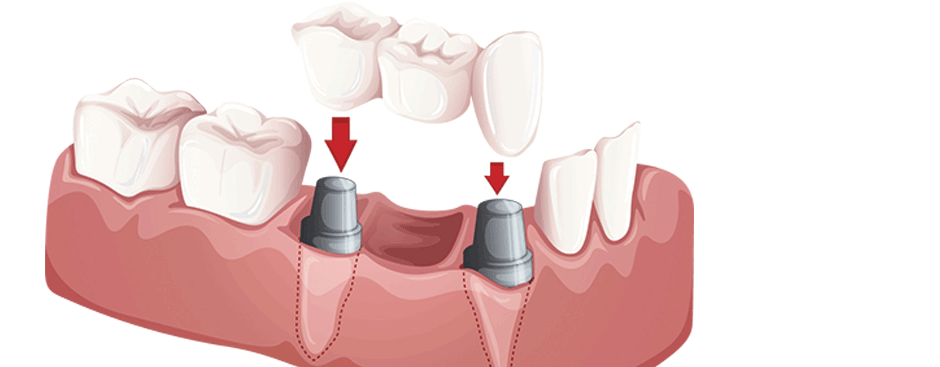Implantology
Dental implants take over the function of the tooth root
Implants are suitable for prosthetics
Should you opt for a dental implant, we recommend to undergo a digital volume tomography (DVT) at preDent. DVT is a relatively new radiographic method that provides with fine detail and only low radiation exposure a three-dimensional images of the jaw. These images are used for the precise, computerized fabrication of drilling templates.
Surgery
The insertion of an implant is performed in several steps. It takes generally 4-8 months from the positioning of the implant to the integration of the prosthetic feature: In our practice, we are using the Camlog and Ancylos implantat systems. For bone augmentation, different methods are available. They differ in terms of their difficulty, effort during the implementation and therfore also in terms of costs. Which one will be recommended in each particular case depends on the individual circumstances.
If only little bone augementation is required, chips from the patient's own bone can be obtained directly during surgery and re-used. Alternatively, a bone substitute material can be used to stretch the bone so that there is enough bone material available to support the implant. The substitute materials are commercially produced and based off animal bones, algae or coral, to ensure a composition as similar to the human bone as possible.
Another common problem is a too narrow jaw, which can not safely support the implants. In these cases, a spreading of the bone is necessary. After the implants are placed, the jawbone is replenished with patient's bone chips or bone replacement material.
Another known method is the so-called sinus lift. It is used when the upper jaw is too low to safely support the implant. During the sinus lift procedure, the maxillary sinus floor is raised by filling bone substitute material into the sinus. During this procedure, bone augmentation and implant placement can be carried out simultaneously or step by step.
Implants are made of bio-compatible titanium and are tightly anchored ("implanted") into the jaw bone.
– after the loss of a single tooth (figure below)
– after losing several teeth (pictured above)
– as a substitute carrier for removable dentures
– as a carrier of dentures in the edentulous ridge

Procedure
Preparation
– Surgical procedure in which the implant is inserted as an artificial tooth root.
– Healing period of 3-6 months
– X-ray to assess the healing process
– Uncovering the implant and gum Modulation
(mini - surgery) in preparation for prosthetics
– Healing period of 2 - 4 weeks
– Prosthetics (e.g. crown or bridge)
Bone augmentation
If it turns out that the jaw does not provide sufficient bone to anchor an implant, the bone has to be built artificially (augmentation). The minimum width of the bone should be 5 mm and the minimum height 10 mm to allow a successful long-term implantation. Ideally, an implant is longer than 8 mm and surrounded by at least 1-2 mm bone.

